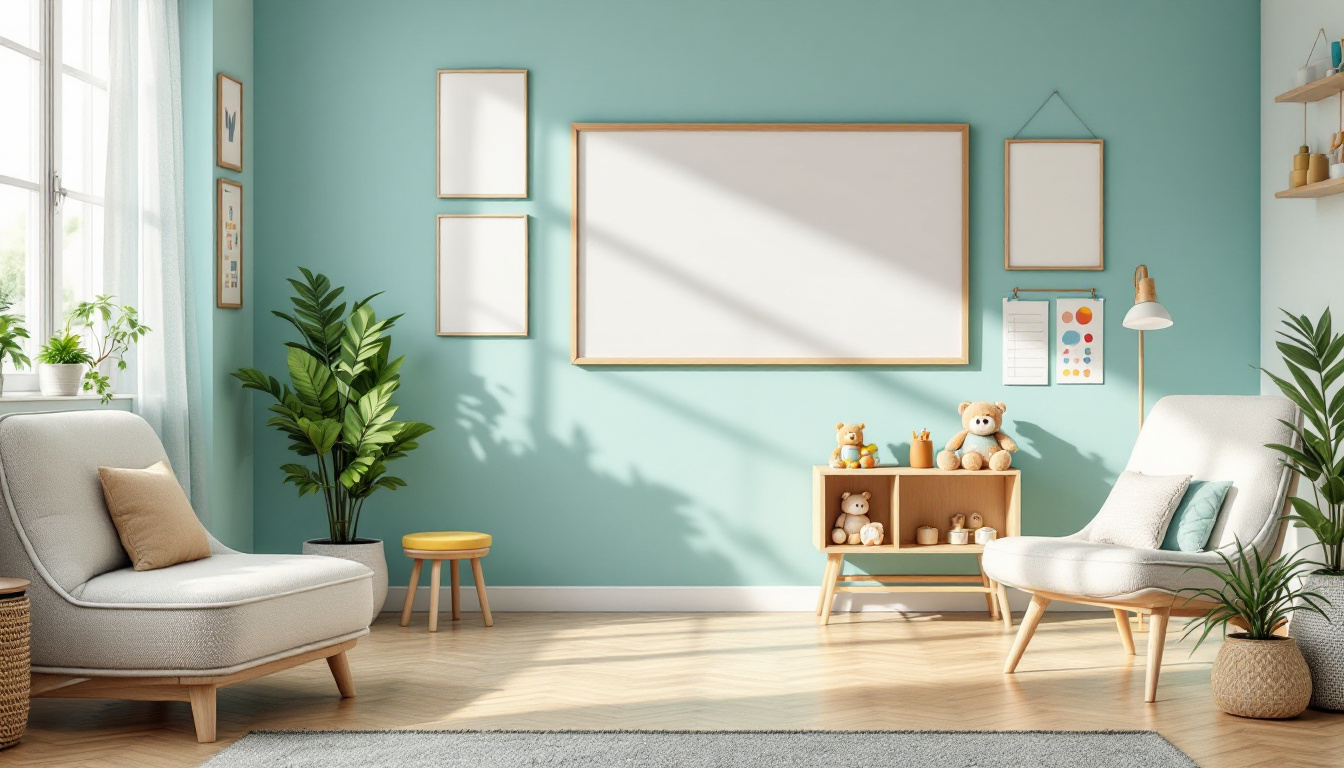Understanding Personal Space and Boundaries with ABA Therapy

Breaking Down Boundaries: An Introduction
Navigating personal space and boundaries can be particularly challenging for children on the autism spectrum. These concepts are vital for positive social interactions and personal safety, making them an essential focus in therapeutic settings. Applied Behavior Analysis (ABA) therapy offers valuable tools and strategies for teaching these skills, enabling individuals with autism to better understand and engage with the world around them.
Defining Personal Space and Boundaries

What are personal space and boundaries?
Personal space and boundaries encompass the physical, emotional, and even digital limits individuals set to safeguard their comfort and well-being in relationships.
Physical space refers to the distance we maintain from others, ensuring feelings of safety and security. Emotional boundaries, on the other hand, protect our feelings and perceptions, setting limits on how others can interact with us emotional situations.
Understanding these concepts helps children on the autism spectrum navigate social interactions effectively. When they learn to respect personal space, it enhances their ability to engage positively with peers, which is crucial for their social development.
Importance of personal space and boundaries
Developing an understanding of personal space allows children with autism to form healthier relationships. This knowledge helps reduce misunderstandings that can arise from inappropriate proximity or lack of boundary awareness.
Here are some reasons why understanding personal space and boundaries is essential:
- Social interactions: Adults and children alike rely on unspoken rules of proximity in social settings. Autistic individuals may benefit from explicit instruction in these norms to avoid social discomfort.
- Safety and comfort: Learning about boundaries protects children from inappropriate touch and helps them identify who can engage physically with them. This knowledge fosters self-advocacy and confidence.
- Enhanced relationships: By understanding their own boundaries, children can respect others' limits as well, leading to improved interpersonal relationships.
Incorporating strategies such as modeling behaviors through role-playing and social stories can significantly aid autistic children in grasping these essential social concepts. Identifying and reinforcing positive behaviors related to personal space can go a long way in fostering social competence.
The ABA Approach: Teaching Personal Space and Social Interactions

How can ABA therapy assist in teaching personal space and social interactions?
Applied Behavior Analysis (ABA) therapy plays a crucial role in teaching personal space and facilitating social interactions for individuals with autism. By employing structured methodologies, ABA therapy tailors learning strategies to meet each individual's specific needs.
Key components of the ABA approach include:
- Modeling Appropriate Behavior: Therapists demonstrate respectful personal space, showcasing appropriate interactions before guiding individuals to replicate these behaviors.
- Visual Aids: Utilizing materials like Social Distance Cards or PECS (Picture Exchange Communication System) cards helps illustrate concepts, making abstract ideas more relatable for children.
- Positive Reinforcement: Celebrating successes when individuals respect personal space reinforces good behavior, motivating them to maintain these practices in real-life scenarios.
- Role-Playing: Scenarios facilitated through role-play provide opportunities to practice social interactions and develop skills in a safe environment.
Through these techniques, individuals learn to recognize and interpret social cues, enhancing their ability to respond appropriately. Social stories, when integrated into the learning process, further elucidate personal space boundaries by framing them in illustrative narratives.
ABA therapy ultimately creates a structured learning environment where individuals can develop the necessary skills to navigate social situations confidently, fostering understanding of personal space while encouraging healthy interpersonal relationships.
Strategies for Teaching Personal Space to Autistic Children

How to help an autistic child understand personal space?
To effectively help an autistic child grasp the concept of personal space, a variety of strategies can be utilized to cater to different learning styles. One of the most impactful methods is the use of social stories, which provide clear narratives that guide children in relatable scenarios, simplifying complex concepts around personal boundaries.
In addition to social stories, role-playing serves as a dynamic approach, allowing children to practice navigating social interactions in a controlled environment. This can include various scenarios that require understanding personal space, enabling them to experience and recognize appropriate and inappropriate distances with peers or adults.
Visual aids can also bolster comprehension. Tools like PECS cards or diagrams visually represent personal space, helping visual learners internalize these boundaries more effectively. Creating physical representations of personal space, like using circles or tape marks on the ground, can physically demonstrate the space around them that should be respected.
To cement their learning, it is crucial to implement positive reinforcement techniques. Celebrating moments when the child respects personal space can motivate them to continue practicing this important skill. Providing consistent feedback and engaging in regular discussions about emotions and personal space can foster a more profound understanding over time, ultimately enhancing their social interactions.
Developing Social Boundaries through Effective Methods

What strategies can be used to teach autistic children social boundaries?
To successfully teach autistic children about social boundaries, a variety of effective strategies can be employed:
- Social Stories: These are tailored narratives that present specific social situations along with appropriate responses. They serve as a useful tool for illustrating complex social interactions in a simplified manner.
- Role-Playing: This method allows children to engage in practice scenarios within a controlled and supportive environment. Role-playing helps them become familiar with reading social cues and understanding the nuances of personal space.
- Direct Instruction: Teaching clear rules about social interactions, including personal space, turn-taking, and communication norms, can provide children with the structured guidance they need.
- Visual Aids: Tools like Picture Exchange Communication System (PECS) cards can make abstract concepts like personal space more concrete, allowing children to visualize what it looks like.
- Social Skills Groups: Participating in group activities encourages interaction with peers, providing a real-world context for practicing learned skills and reinforcing positive behaviors.
Using visual cues and social stories
Visual cues play a crucial role in helping children understand personal boundaries effectively. Tools such as social distance cards depict various social scenarios that highlight appropriate and inappropriate distances in different contexts. Meanwhile, social stories not only provide relatable narratives but also enhance comprehension of social expectations by presenting them in context.
Through these methods, children with autism can develop a better understanding of their own personal space and that of others, facilitating more positive social interactions.
Parental Support in Social Skill Development

How can parents support children in understanding emotional cues and social skills?
Parents play a vital role in helping children with autism develop emotional understanding and social skills. Creating an environment that fosters open communication is essential. This safe space encourages children to express their feelings freely, allowing parents to recognize and address any emotional challenges.
Modeling emotional expressions through daily interactions is a powerful strategy. Parents can demonstrate how to read and respond to emotional cues, helping their children understand different social contexts. Engaging in role-playing activities offers children a chance to practice these skills in a comfortable setting, boosting their confidence.
Using visual aids can further support emotional learning. For example, emotion charts help children identify and label feelings, making it easier for them to recognize emotions in themselves and others. This practice can be reinforced through regular discussions about various social situations.
Activities for reinforcing social skills
Incorporating targeted activities can significantly enhance social skills development. One effective method is the use of social stories, which present scenarios that illustrate personal boundaries and emotional responses clearly. Additionally, activities like the 'Space Bubble' help children understand personal space by visually representing boundaries with ropes or tape.
Through consistent positive reinforcement during these activities, parents can encourage children to celebrate their successes in recognizing and respecting boundaries. This combination of modeling, structured practice, and reinforcement not only develops essential social skills but also improves the child's overall emotional regulation.
Incorporating Personal Space Education in IEP Goals
What is the significance of personal space skills in forming IEP goals?
The significance of personal space skills in forming Individualized Education Program (IEP) goals is paramount for enhancing social interaction and communication for individuals, particularly those on the autism spectrum. Personal space is not just a matter of comfort; it plays a crucial role in fostering healthy relationships and understanding social cues.
By teaching personal space skills, educators can help students recognize and respect their own boundaries as well as those of others. This understanding reduces anxiety in various social situations, making interactions more enjoyable and less stressful.
Incorporating these skills into IEP goals offers several benefits:
- Social Awareness: Students learn to navigate complex social dynamics.
- Emotional Well-being: A better grasp of personal space can lead to improved emotional regulation.
- Relationship Building: Clear boundaries lay the groundwork for meaningful relationships.
Furthermore, by establishing clear objectives related to personal space, educators and therapists can effectively track progress and adapt strategies according to individual needs. This methodical approach supports students in developing broader social competencies.
In essence, personal space education within IEPs serves as a foundational element for promoting successful social interactions, ultimately contributing to the holistic development of children with autism.
The Way Forward: Towards Better Understanding
Educating children on the autism spectrum about personal space and boundaries is a crucial step towards fostering their social development. Through ABA therapy and the concerted efforts of caregivers, educators, and parents, these children can gain a better understanding of social nuances and establish healthy interpersonal relationships. The journey may be challenging, but with the right tools and strategies, the outcomes promise enhanced emotional well-being and social integration for individuals on the autism spectrum.
References
- How to teach personal space and boundaries | The Spectrum
- Establishing Boundaries and Autism: Essential Insights for Caregivers
- Strategies for Teaching Boundaries Autism - - Eagles WIll ABA
- [PDF] Understanding personal space Social Skills Activity - Autistic Hub
- How ABA Therapy Helps With Social Skills
- Space Invaders: Personal Space and Autism
- Learning about bodies and personal boundaries: autistic children
More Resources
Expert Clinicians
Get started today ->

.jpg)
.jpg)


.jpg)



















































































































































































































































































































































































































































.jpg)
.jpg)
.jpg)
.jpg)
.jpg)
.jpg)
.jpg)
.jpg)
.jpg)
.jpg)
.jpg)
.jpg)
.jpg)
.jpg)
.jpg)
.jpg)
.jpg)
.jpg)
.jpg)
.jpg)
.jpg)
.jpg)
.jpg)
.jpg)

.jpg)
.jpg)
.jpg)
.jpg)
.jpg)
.jpg)
.jpg)
.jpg)
.jpg)
.jpg)
.jpg)
.jpg)
.jpg)
.jpg)
.jpg)
.jpg)
.jpg)
.jpg)
.jpg)
.jpg)
.jpg)
.jpg)
.jpg)
.jpg)





































































































































































































.jpg)


































































.jpg)
.jpg)
.jpg)
.jpg)
.jpg)
.jpg)
.jpg)
.jpg)
.jpg)
.jpg)
.jpg)
.jpg)
.jpg)
.jpg)
.jpg)
.jpg)
.jpg)
.jpg)
.jpg)
.jpg)
.jpg)
.jpg)
.jpg)
.jpg)
.jpg)
.jpg)
.jpg)
.jpg)
.jpg)
.jpg)
.jpg)
.jpg)
.jpg)
.jpg)


.jpg)
.jpg)
.jpg)
.jpg)
.jpg)
.jpg)
.jpg)
.jpg)
.jpg)
.jpg)
.jpg)
.jpg)
.jpg)
.jpg)
.jpg)
.jpg)
.jpg)
.jpg)
.jpg)
.jpg)
.jpg)
.jpg)
.jpg)
.jpg)
.jpg)
.jpg)
.jpg)


.jpg)
.jpg)
.jpg)
.jpg)
.jpg)
.jpg)
.jpg)
.jpg)
.jpg)
.jpg)
.jpg)
.jpg)
.jpg)
.jpg)
.jpg)
.jpg)
.jpg)
.jpg)
.jpg)

.jpg)

.jpg)



































































































.jpg)
.jpg)
.jpg)
.jpg)
.jpg)
.jpg)
.jpg)
.jpg)
.jpg)
.jpg)
.jpg)
.jpg)
.jpg)
.jpg)
.jpg)
.jpg)
.jpg)
.jpg)
.jpg)
.jpg)
.jpg)
.jpg)
.jpg)
.jpg)
.jpg)
.jpg)
.jpg)
.jpg)
.jpg)
.jpg)
.jpg)
.jpg)
.jpg)
.jpg)
.jpg)
.jpg)
.jpg)
.jpg)
.jpg)
.jpg)
.jpg)
.jpg)
.jpg)
.jpg)
.jpg)
.jpg)
.jpg)

.jpg)
.jpg)
.jpg)
.jpg)
.jpg)
.jpg)
.jpg)
.jpg)
.jpg)
.jpg)
.jpg)
.jpg)
.jpg)
.jpg)

.jpg)
.jpg)
.jpg)
.jpg)
.jpg)
.jpg)
.jpg)
.jpg)
.jpg)
.jpg)
.jpg)
.jpg)
.jpg)
.jpg)

.jpg)
.jpg)
.jpg)
.jpg)
.jpg)
.jpg)
.jpg)
.jpg)
.jpg)
.jpg)
.jpg)
.jpg)
.jpg)
.jpg)

.jpg)
.jpg)
.jpg)
.jpg)
.jpg)
.jpg)
.jpg)
.jpg)
.jpg)
.jpg)
.jpg)
.jpg)
.jpg)
.jpg)

.jpg)
.jpg)
.jpg)
.jpg)
.jpg)
.jpg)
.jpg)
.jpg)
.jpg)
.jpg)
.jpg)
.jpg)
.jpg)
.jpg)

.jpg)
.jpg)
.jpg)
.jpg)
.jpg)
.jpg)
.jpg)
.jpg)
.jpg)
.jpg)
.jpg)
.jpg)
.jpg)
.jpg)
.jpg)
.jpg)
.jpg)
.jpg)
.jpg)
.jpg)
.jpg)
.jpg)
.jpg)
.jpg)
.jpg)
.jpg)
.jpg)
.jpg)
.jpg)
.jpg)
.jpg)
.jpg)
.jpg)
.jpg)
.jpg)
.jpg)
.jpg)
.jpg)
.jpg)
.jpg)
.jpg)
.jpg)
.jpg)
.jpg)
.jpg)
.jpg)
.jpg)
.jpg)
.jpg)

.jpg)
.jpg)
.jpg)
.jpg)
.jpg)
.jpg)
.jpg)
.jpg)
.jpg)
.jpg)
.jpg)
.jpg)
.jpg)
.jpg)
.jpg)
.jpg)
.jpg)
.jpg)
.jpg)
.jpg)
.jpg)
.jpg)
.jpg)
.jpg)
.jpg)

.jpg)
.jpg)
.jpg)
.jpg)
.jpg)
.jpg)
.jpg)
.jpg)
.jpg)
.jpg)
.jpg)
.jpg)
.jpg)
.jpg)
.jpg)
.jpg)
.jpg)
.jpg)
.jpg)
.jpg)
.jpg)
.jpg)
.jpg)

.jpg)
.jpg)
.jpg)
.jpg)
.jpg)
.jpg)
.jpg)
.jpg)
.jpg)
.jpg)
.jpg)
.jpg)
.jpg)
.jpg)
.jpg)
.jpg)
.jpg)
.jpg)
.jpg)
.jpg)
.jpg)
.jpg)
.jpg)

.jpg)
.jpg)
.jpg)
.jpg)
.jpg)
.jpg)
.jpg)
.jpg)
.jpg)
.jpg)
.jpg)
.jpg)
.jpg)
.jpg)
.jpg)
.jpg)
.jpg)
.jpg)
.jpg)
.jpg)
.jpg)
.jpg)
.jpg)
.jpg)
.jpg)
.jpg)
.jpg)
.jpg)
.jpg)
.jpg)
.jpg)
.jpg)
.jpg)
.jpg)
.jpg)
.jpg)
.jpg)
.jpg)
.jpg)
.jpg)
.jpg)
.jpg)
.jpg)
.jpg)
.jpg)
.jpg)
.jpg)

.jpg)
.jpg)
.jpg)
.jpg)
.jpg)
.jpg)
.jpg)
.jpg)
.jpg)
.jpg)
.jpg)
.jpg)
.jpg)
.jpg)
.jpg)
.jpg)
.jpg)
.jpg)
.jpg)
.jpg)
.jpg)
.jpg)
.jpg)
.jpg)

.jpg)
.jpg)
.jpg)
.jpg)
.jpg)
.jpg)
.jpg)
.jpg)
.jpg)
.jpg)
.jpg)
.jpg)
.jpg)
.jpg)
.jpg)
.jpg)
.jpg)
.jpg)
.jpg)
.jpg)
.jpg)
.jpg)
.jpg)
.jpg)
.jpg)

.jpg)
.jpg)
.jpg)
.jpg)
.jpg)
.jpg)
.jpg)
.jpg)
.jpg)
.jpg)
.jpg)
.jpg)
.jpg)
.jpg)
.jpg)
.jpg)
.jpg)
.jpg)
.jpg)
.jpg)
.jpg)
.jpg)
.jpg)
.jpg)
.jpg)
.jpg)
.jpg)
.jpg)
.jpg)
.jpg)
.jpg)
.jpg)
.jpg)
.jpg)
.jpg)
.jpg)
.jpg)
.jpg)
.jpg)
.jpg)
.jpg)
.jpg)
.jpg)
.jpg)
.jpg)
.jpg)
.jpg)

.jpg)
.jpg)
.jpg)
.jpg)
.jpg)

.jpg)
.jpg)
.jpg)
.jpg)
.jpg)
.jpg)
.jpg)
.jpg)
.jpg)
.jpg)
.jpg)
.jpg)
.jpg)
.jpg)
.jpg)
.jpg)
.jpg)

.jpg)
.jpg)
.jpg)
.jpg)
.jpg)
.jpg)
.jpg)
.jpg)
.jpg)
.jpg)
.jpg)
.jpg)
.jpg)
.jpg)
.jpg)
.jpg)
.jpg)
.jpg)
.jpg)
.jpg)
.jpg)
.jpg)
.jpg)

.jpg)
.jpg)
.jpg)
.jpg)
.jpg)
.jpg)
.jpg)
.jpg)
.jpg)
.jpg)
.jpg)
.jpg)
.jpg)
.jpg)
.jpg)
.jpg)
.jpg)
.jpg)
.jpg)
.jpg)
.jpg)

.jpg)
.jpg)
.jpg)
.jpg)
.jpg)
.jpg)
.jpg)
.jpg)
.jpg)
.jpg)
.jpg)
.jpg)
.jpg)
.jpg)
.jpg)
.jpg)
.jpg)
.jpg)
.jpg)
.jpg)
.jpg)
.jpg)
.jpg)
.jpg)
.jpg)
.jpg)
.jpg)

.jpg)
.jpg)
.jpg)
.jpg)
.jpg)
.jpg)
.jpg)
.jpg)
.jpg)
.jpg)
.jpg)
.jpg)
.jpg)
.jpg)
.jpg)
.jpg)
.jpg)
.jpg)
.jpg)
.jpg)
.jpg)
.jpg)
.jpg)
.jpg)
.jpg)
.jpg)
.jpg)
.jpg)
.jpg)
.jpg)
.jpg)

.jpg)
.jpg)
.jpg)
.jpg)
.jpg)
.jpg)
.jpg)
.jpg)
.jpg)
.jpg)
.jpg)
.jpg)
.jpg)
.jpg)
.jpg)
.jpg)
.jpg)
.jpg)
.jpg)
.jpg)
.jpg)
.jpg)
.jpg)
.jpg)
.jpg)
.jpg)
.jpg)
.jpg)
.jpg)
.jpg)
.jpg)
.jpg)
.jpg)
.jpg)
.jpg)
.jpg)
.jpg)
.jpg)
.jpg)
.jpg)
.jpg)
.jpg)
.jpg)
.jpg)
.jpg)
.jpg)
.jpg)
.jpg)
.jpg)
.jpg)
.jpg)
.jpg)
.jpg)
.jpg)
.jpg)
.jpg)
.jpg)
.jpg)
.jpg)
.jpg)
.jpg)
.jpg)
.jpg)
.jpg)
.jpg)
.jpg)

.png)
.png)
.png)
.png)
.png)
.png)
.png)
.png)
.png)

.jpg)
.jpg)
.jpg)
.jpg)
.jpg)
.jpg)
.jpg)
.jpg)
.jpg)
.jpg)
.jpg)

.jpg)
.jpg)
.jpg)
.jpg)
.jpg)
.jpg)
.jpg)
.jpg)
.jpg)
.jpg)
.jpg)
.jpg)
.jpg)
.jpg)
.jpg)
.jpg)
.jpg)
.jpg)
.jpg)
.jpg)
.jpg)

.png)
.png)
.png)
.png)
.png)
.png)
.png)
.png)
.png)
.png)
.png)
.png)
.png)
.png)
.png)
.png)
.png)
.png)
.png)
.png)
.png)
.png)

.png)


.jpg)
.jpg)
.jpg)
.jpg)
.jpg)
.jpg)
.jpg)
.jpg)
.jpg)

.jpg)
.jpg)
.jpg)
.jpg)
.jpg)
.jpg)
.jpg)
.jpg)
.jpg)
.jpg)
.jpg)
.jpg)
.jpg)
.jpg)
.jpg)
.jpg)
.jpg)
.jpg)
.jpg)
.jpg)
.jpg)
.jpg)



























.jpg)
.jpg)

.jpg)
.jpg)
.jpg)
.jpg)
.jpg)
.jpg)
.jpg)
.jpg)
.jpg)
.jpg)
.jpg)
.jpg)
.jpg)
.jpg)
.jpg)
.jpg)
.jpg)
.jpg)
.jpg)
.jpg)
.jpg)

.jpg)
.jpg)
.jpg)
.jpg)
.jpg)
.jpg)
.jpg)
.jpg)
.jpg)
.jpg)
.jpg)
.jpg)
.jpg)
.jpg)
.jpg)
.jpg)
.jpg)
.jpg)
.jpg)
.jpg)
.jpg)
.jpg)
.jpg)
.jpg)

.jpg)
.jpg)
.jpg)
.jpg)
.jpg)
.jpg)
.jpg)
.jpg)
.jpg)
.jpg)
.jpg)
.jpg)
.jpg)
.jpg)
.jpg)
.jpg)
.jpg)
.jpg)

.jpg)
.jpg)
.jpg)
.jpg)

